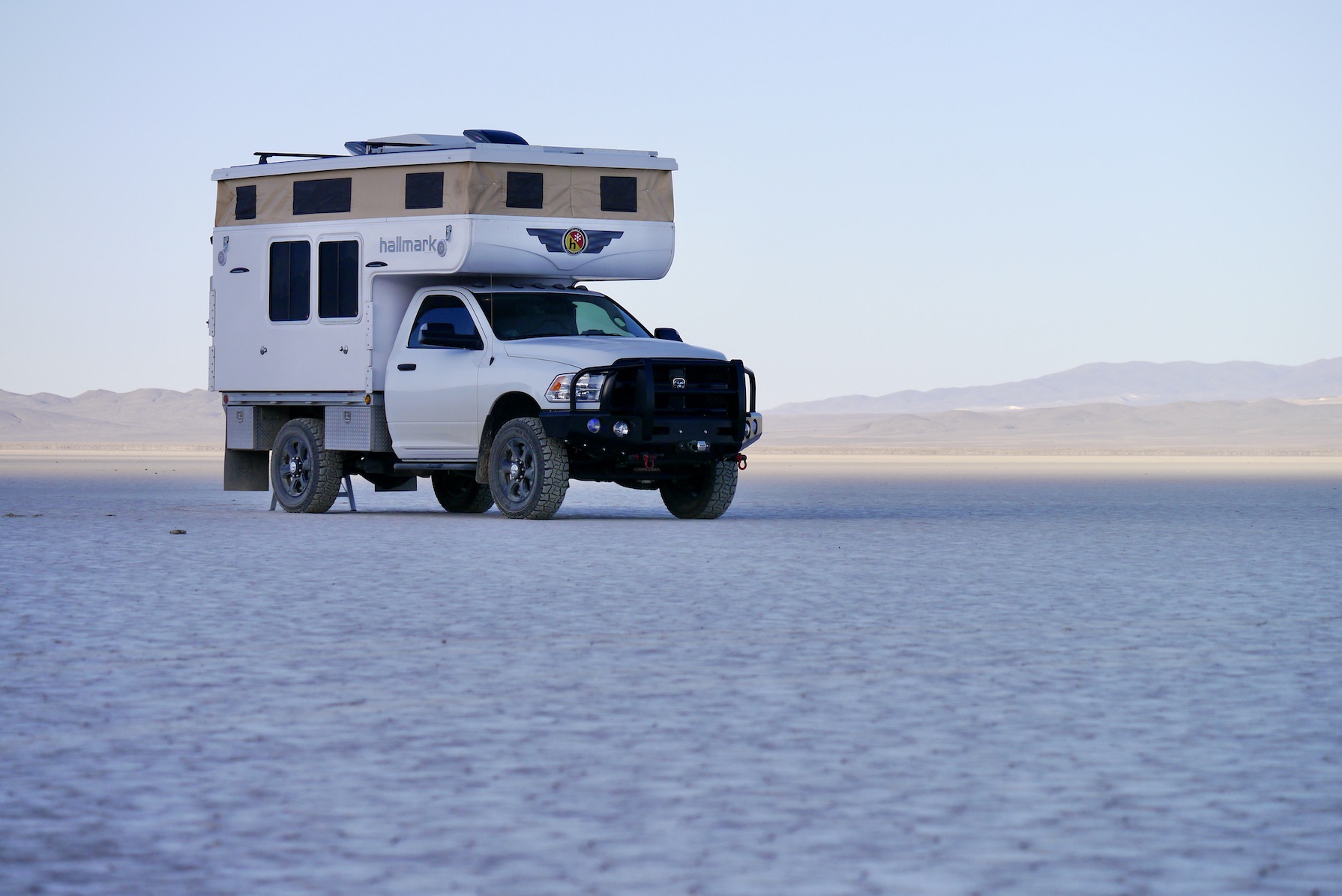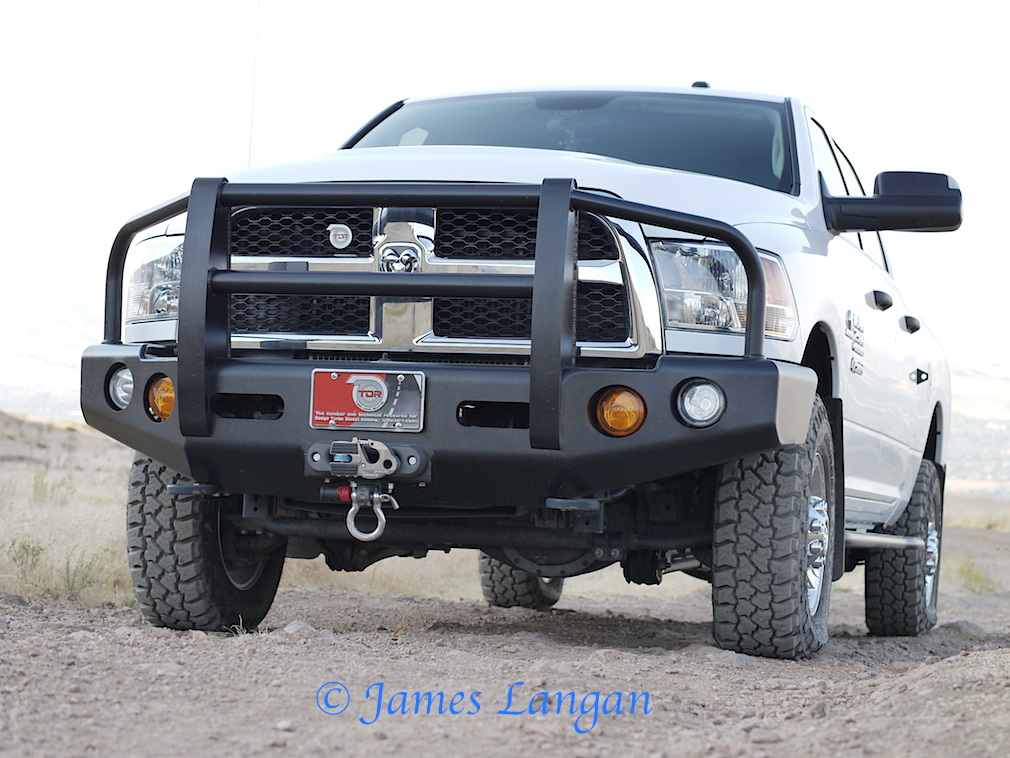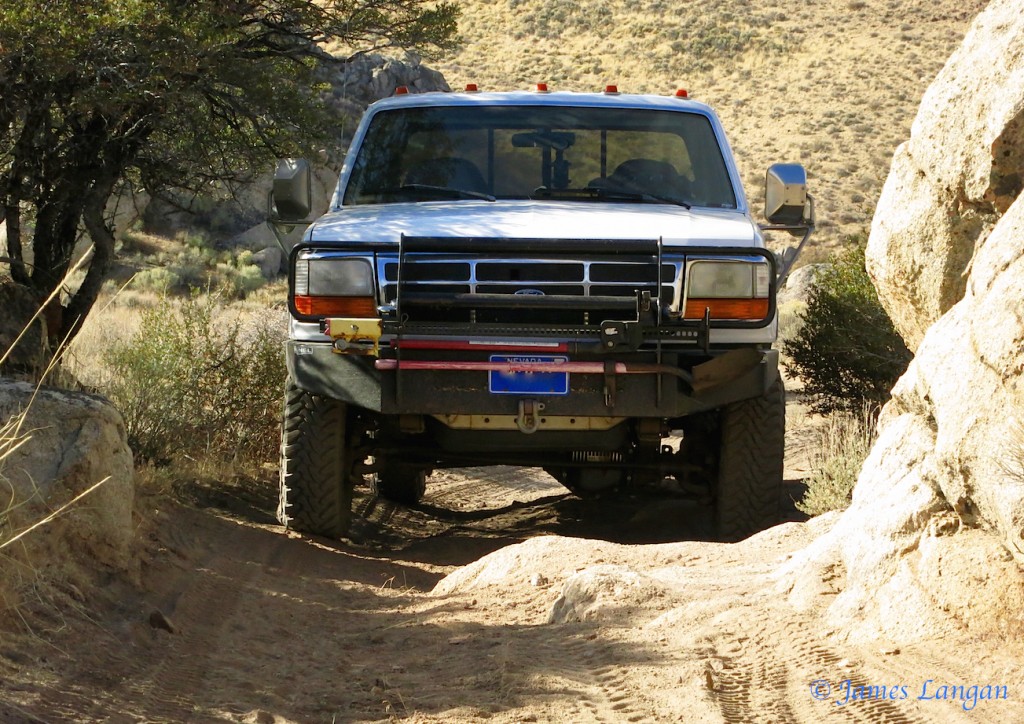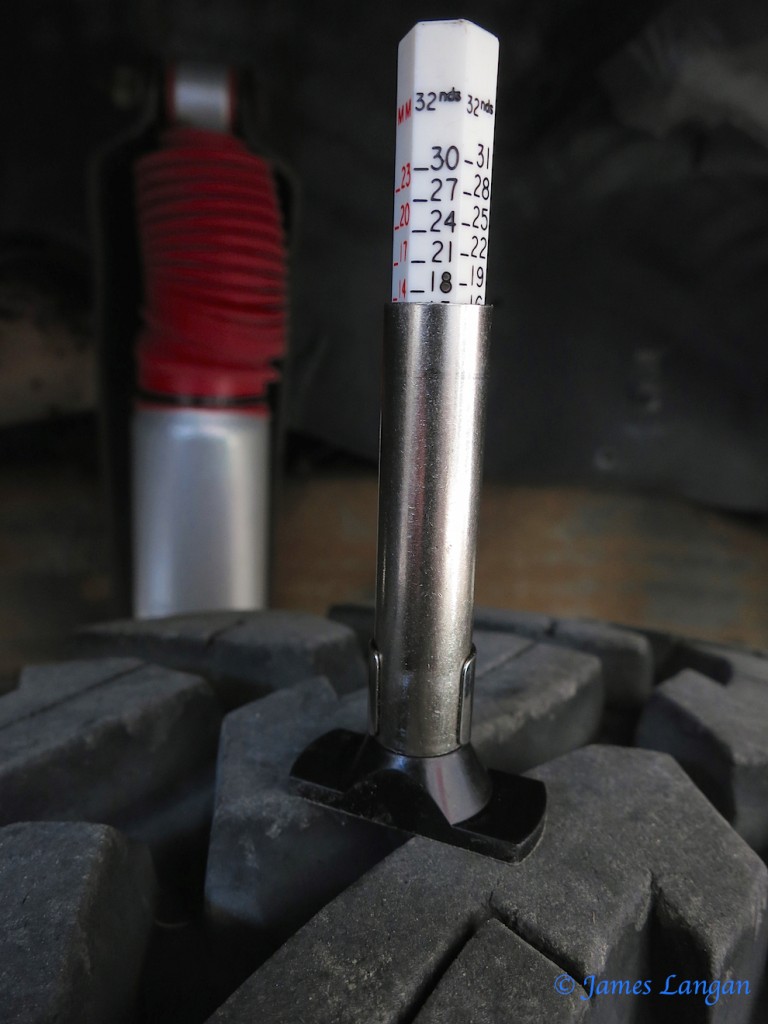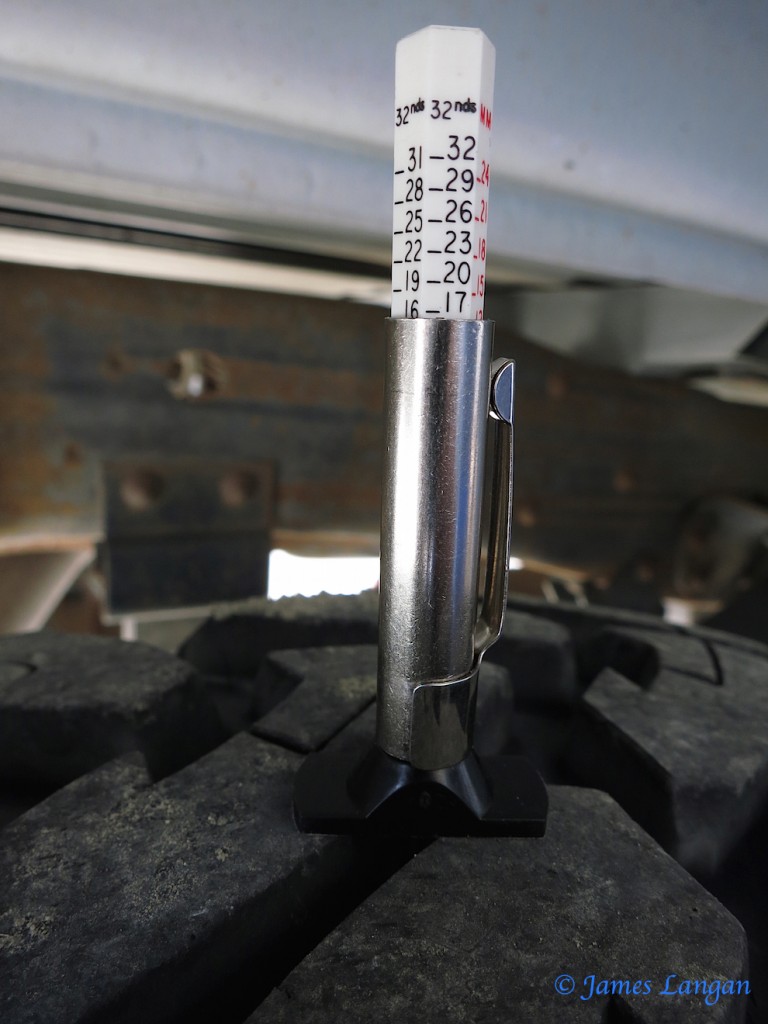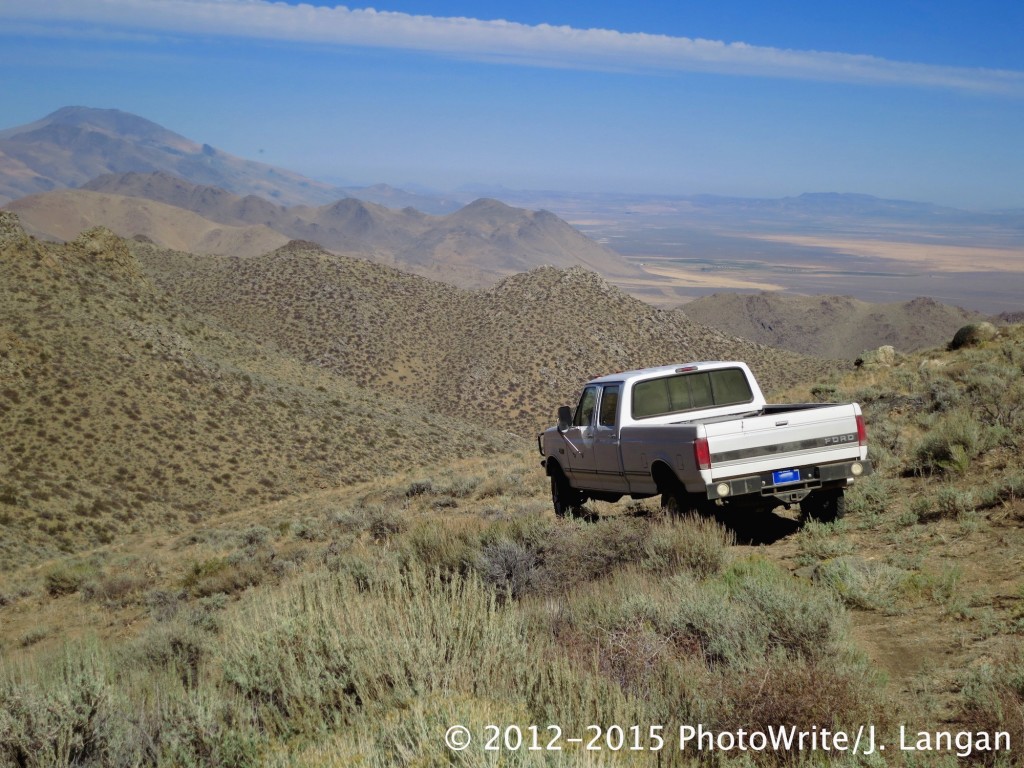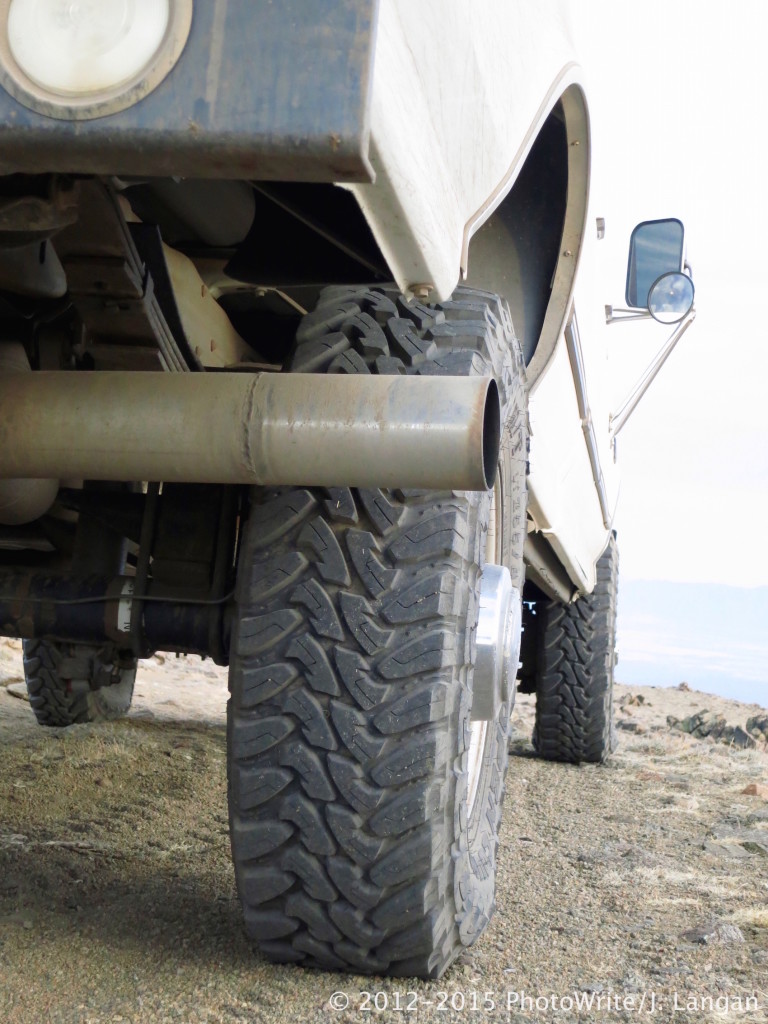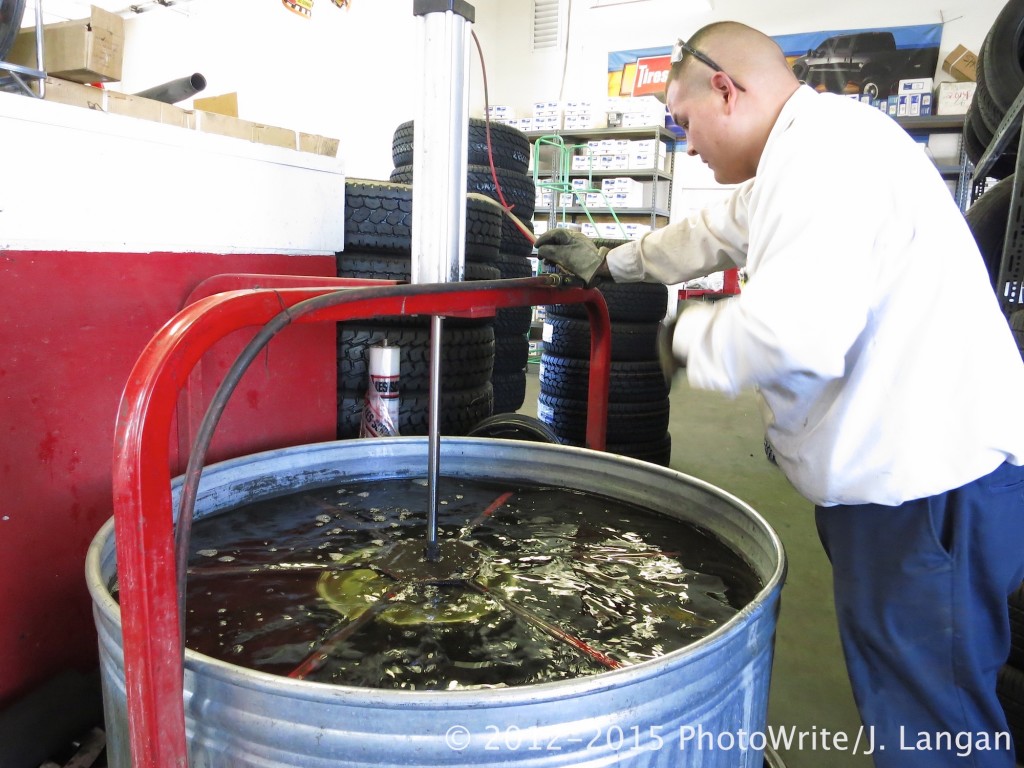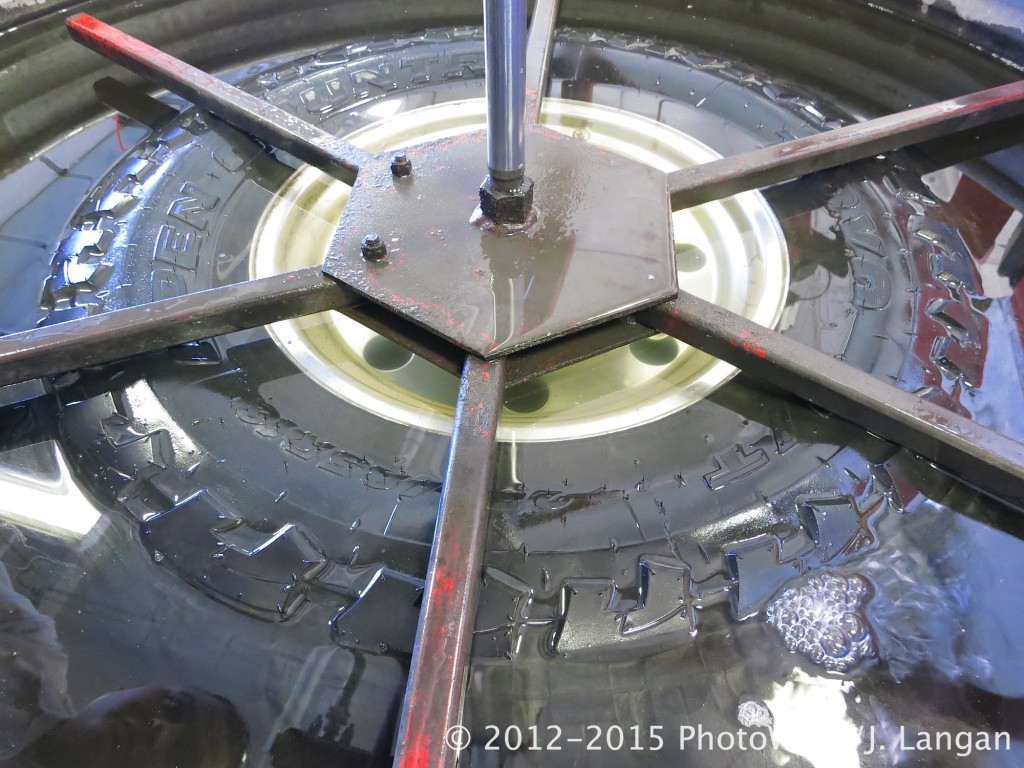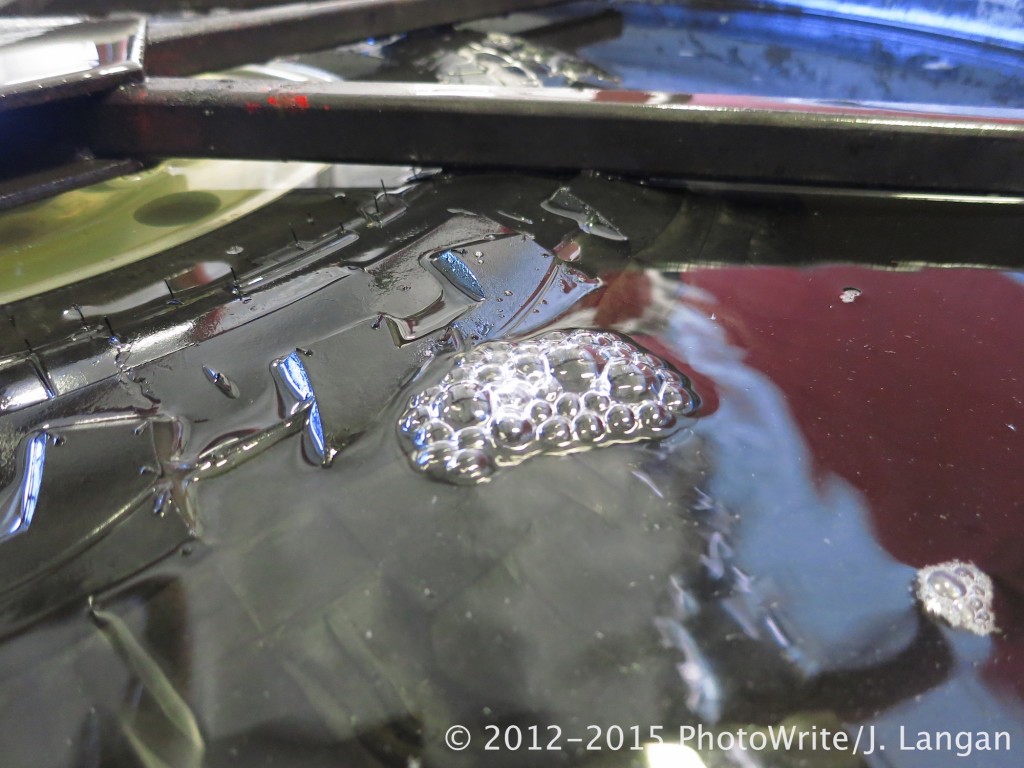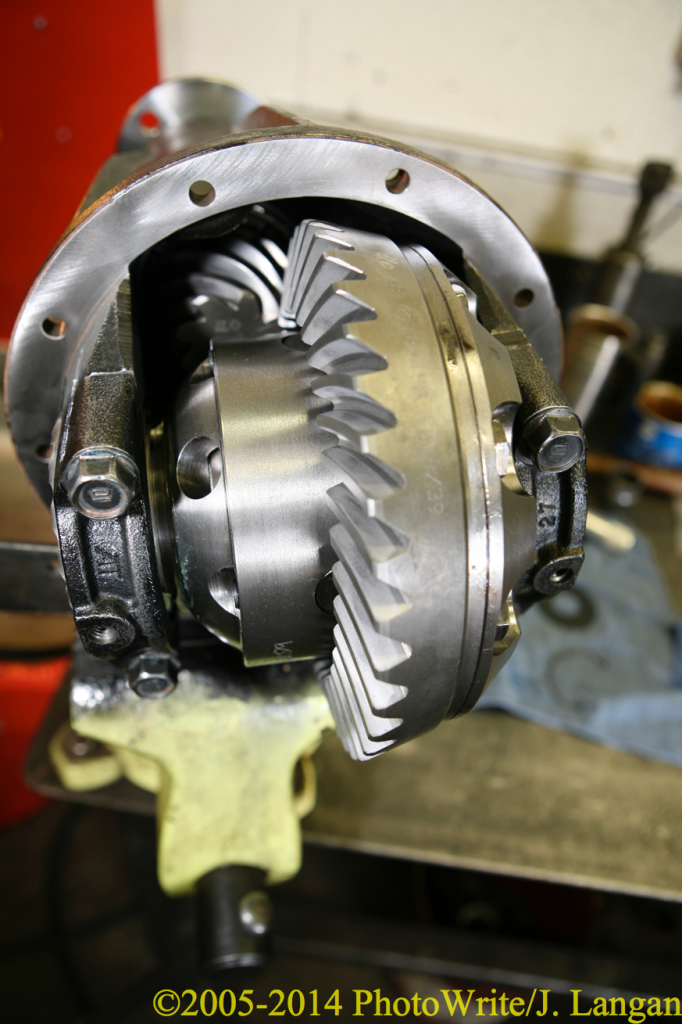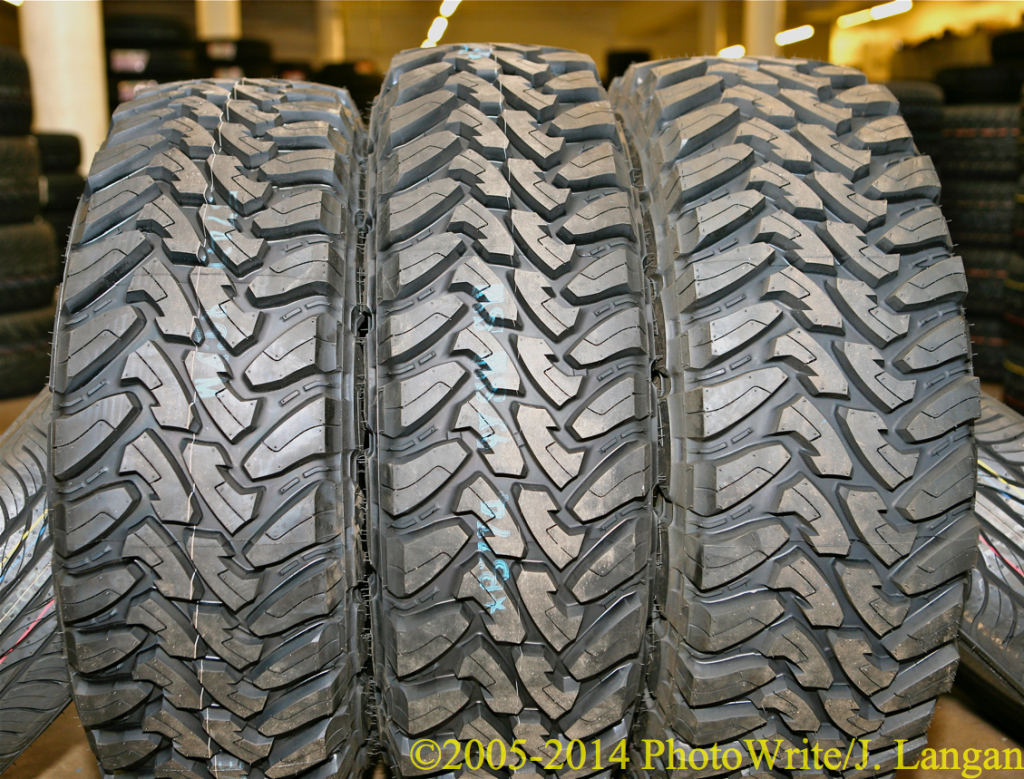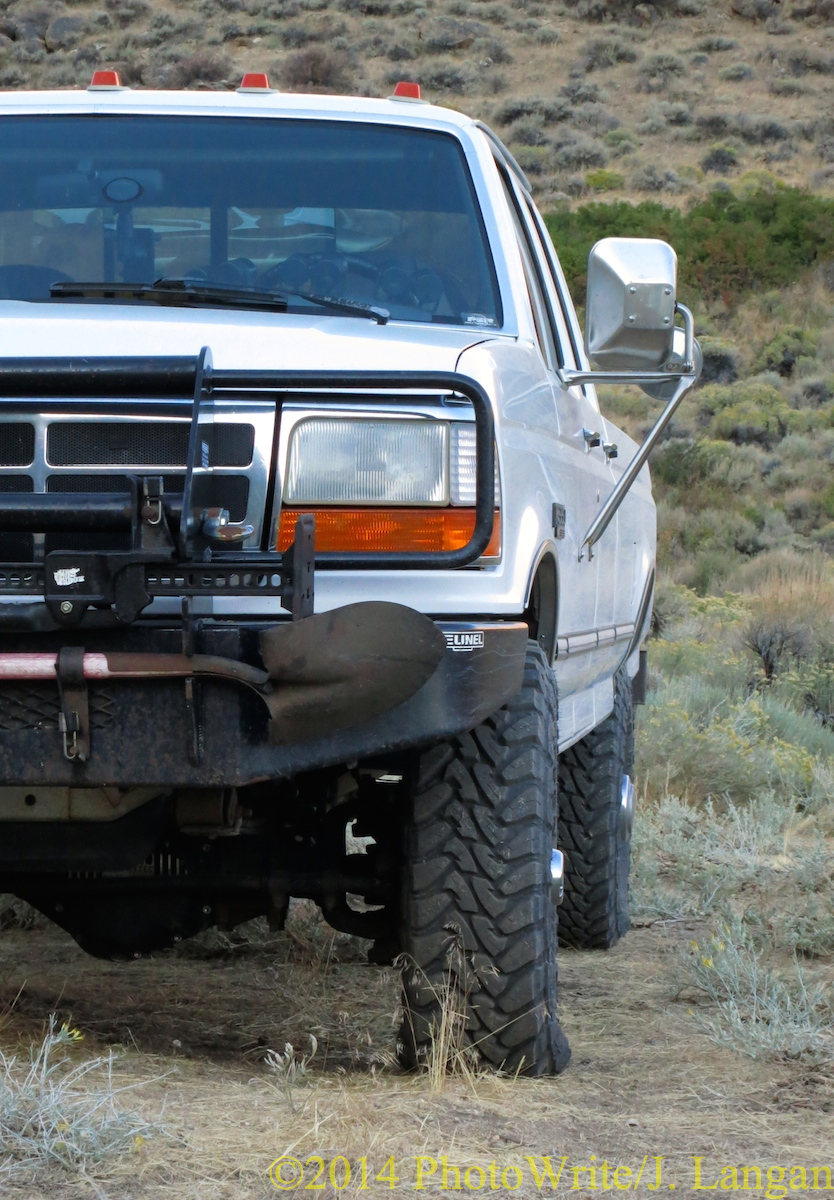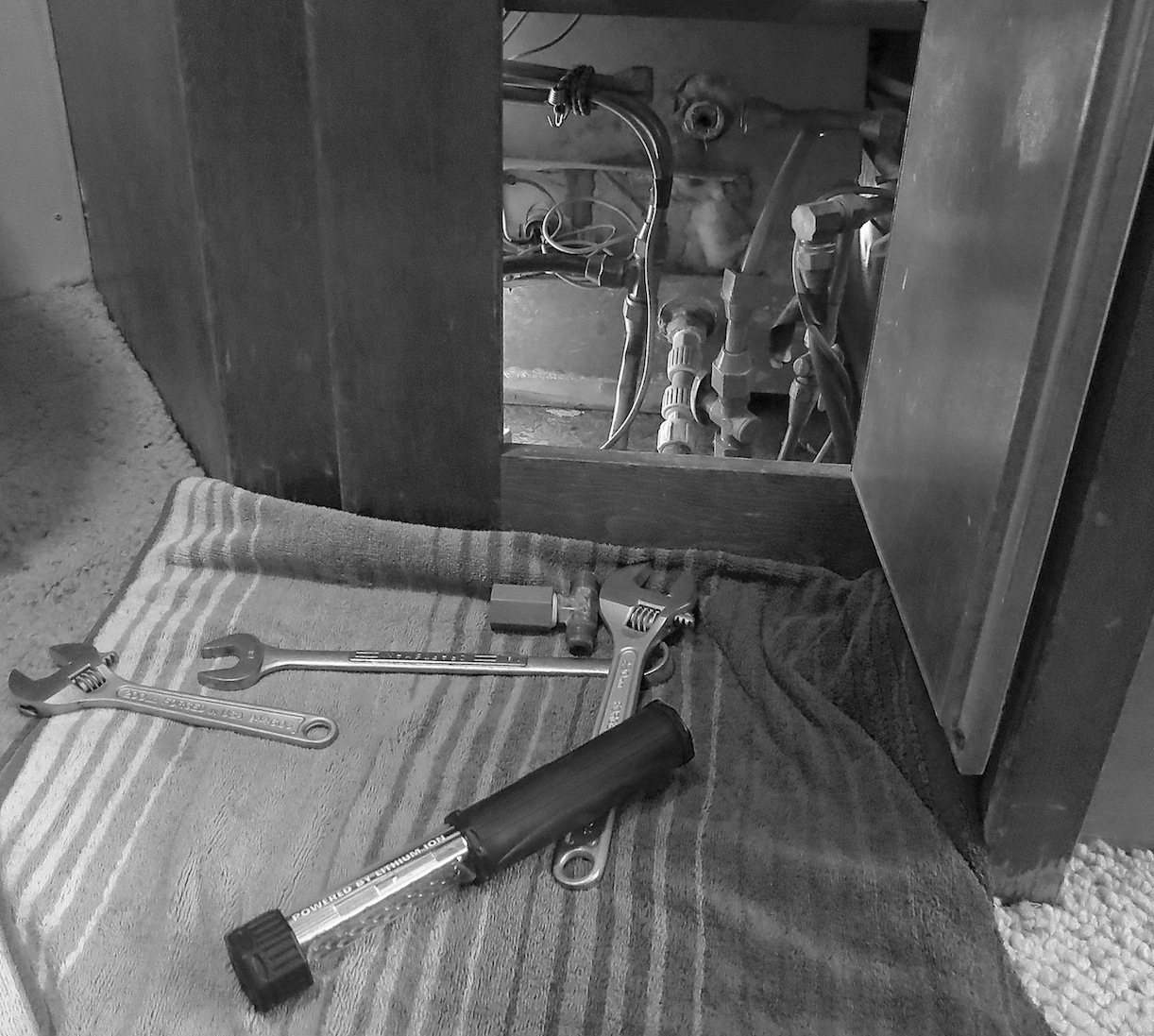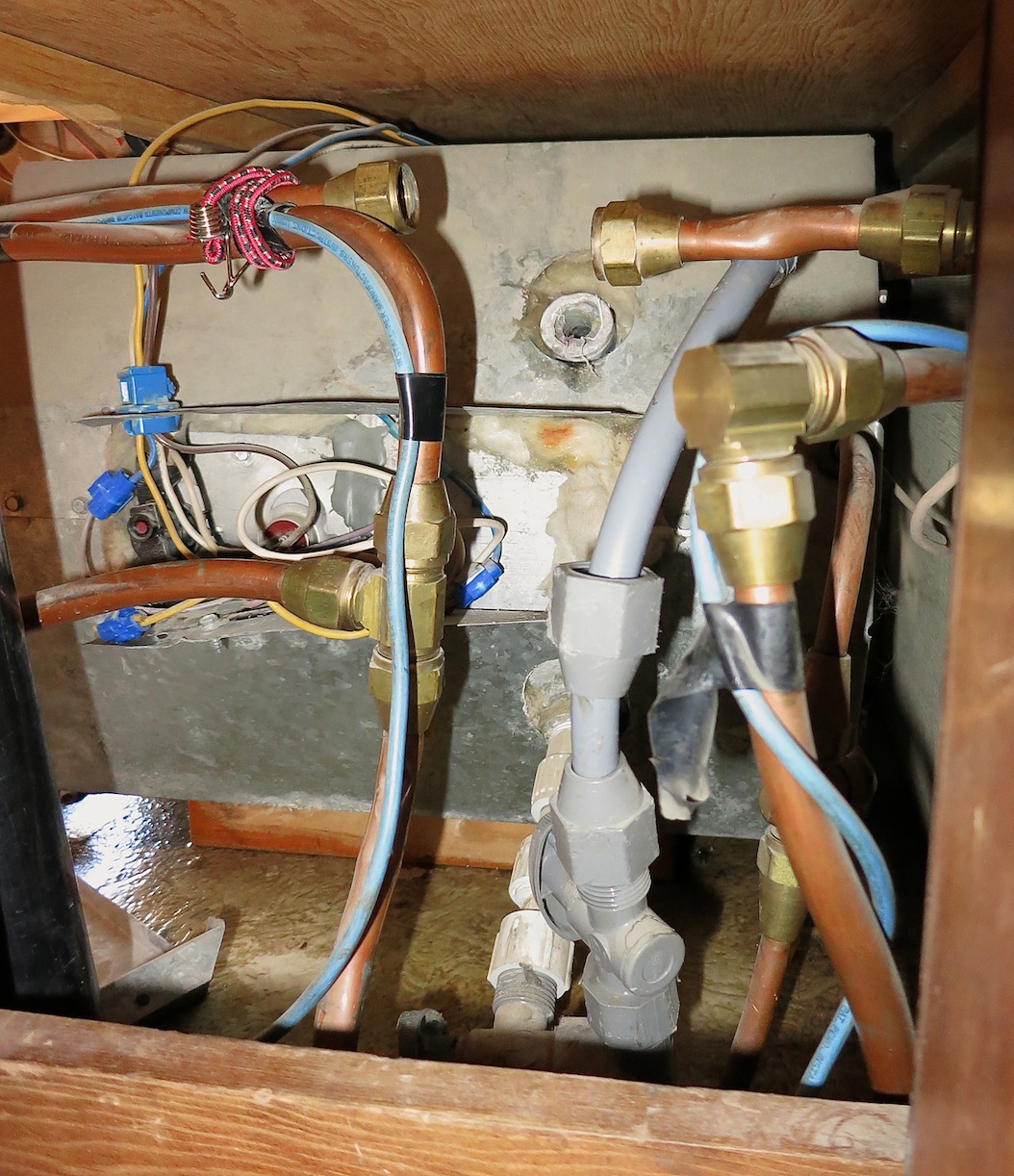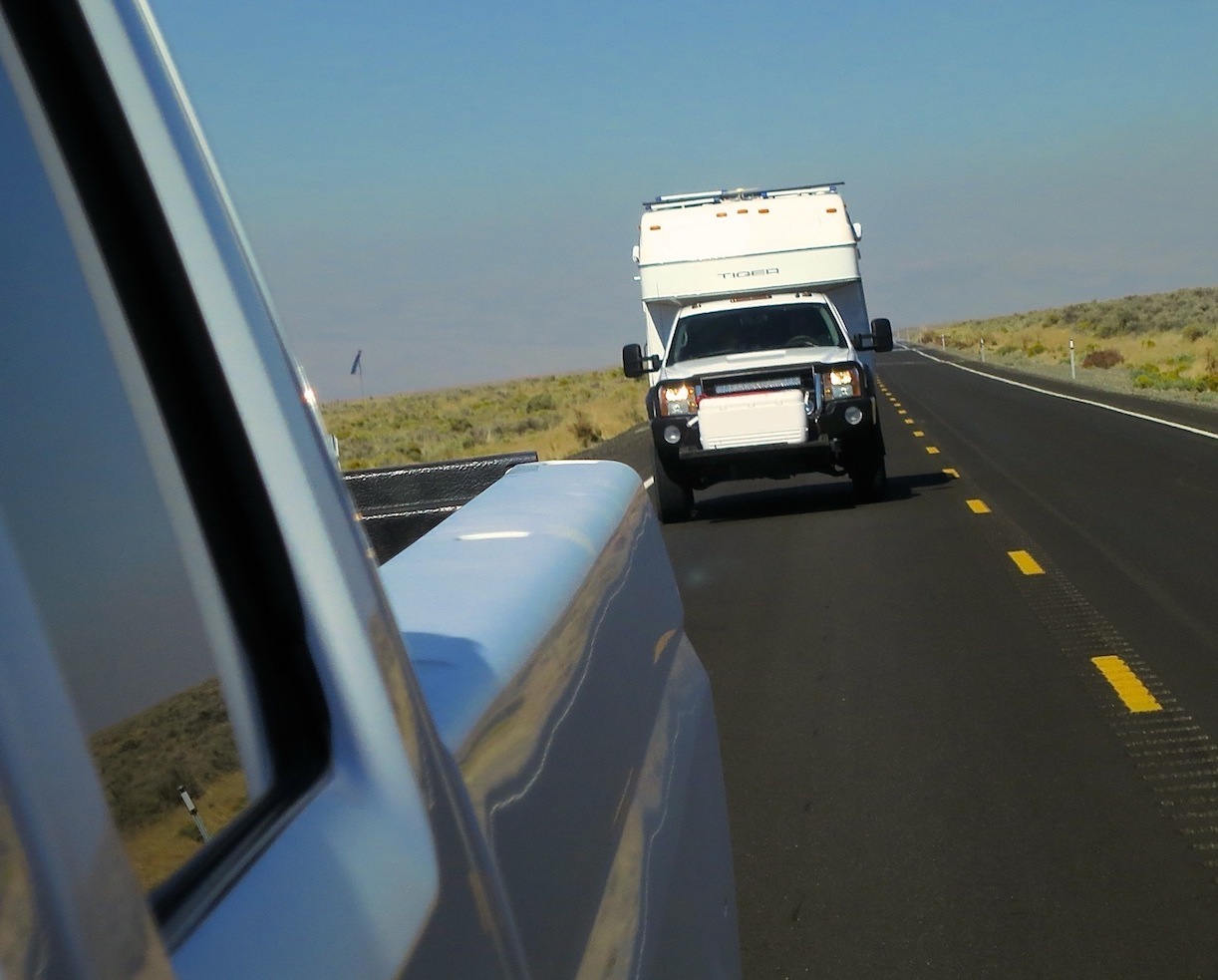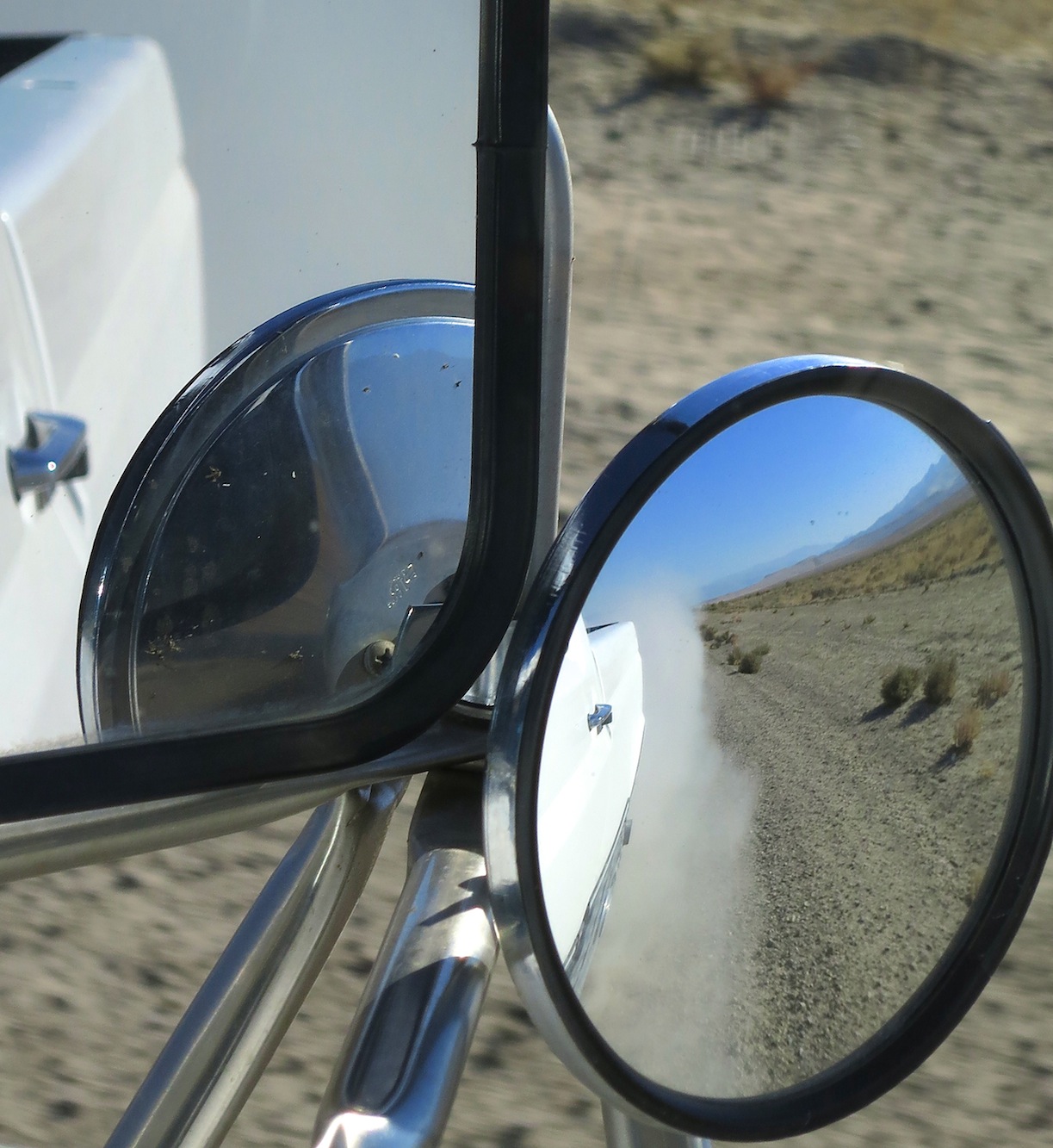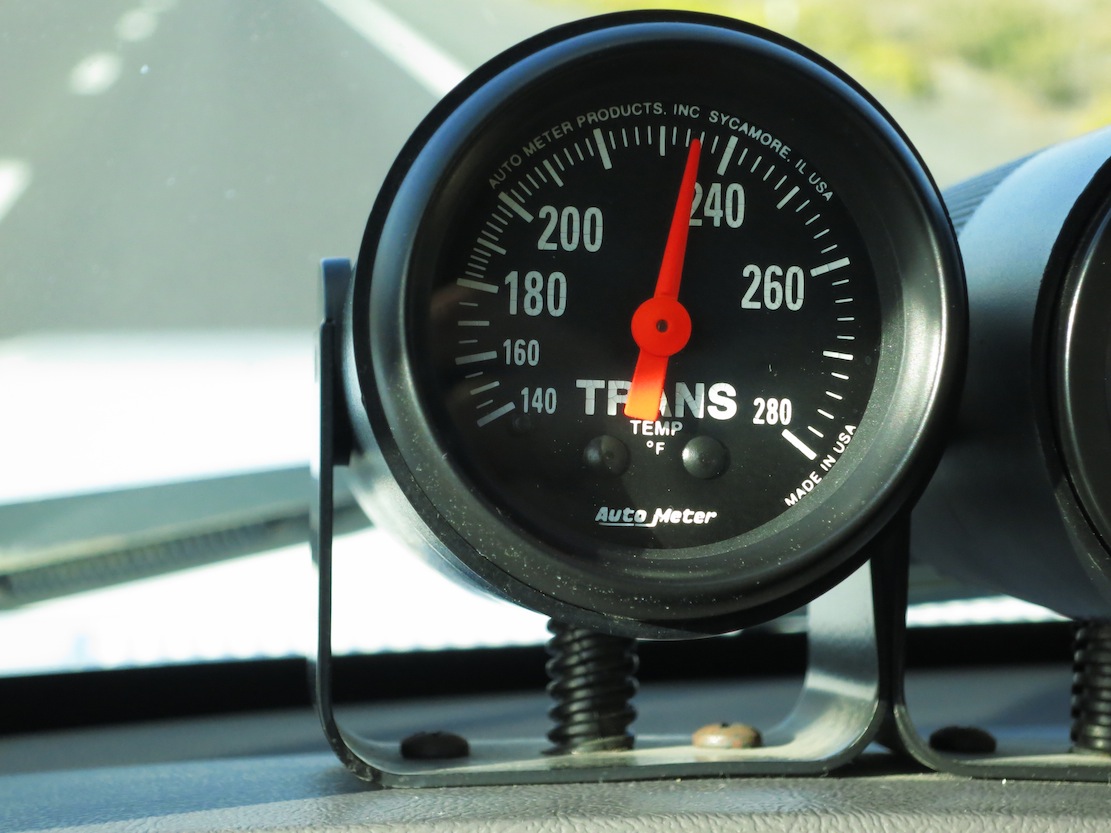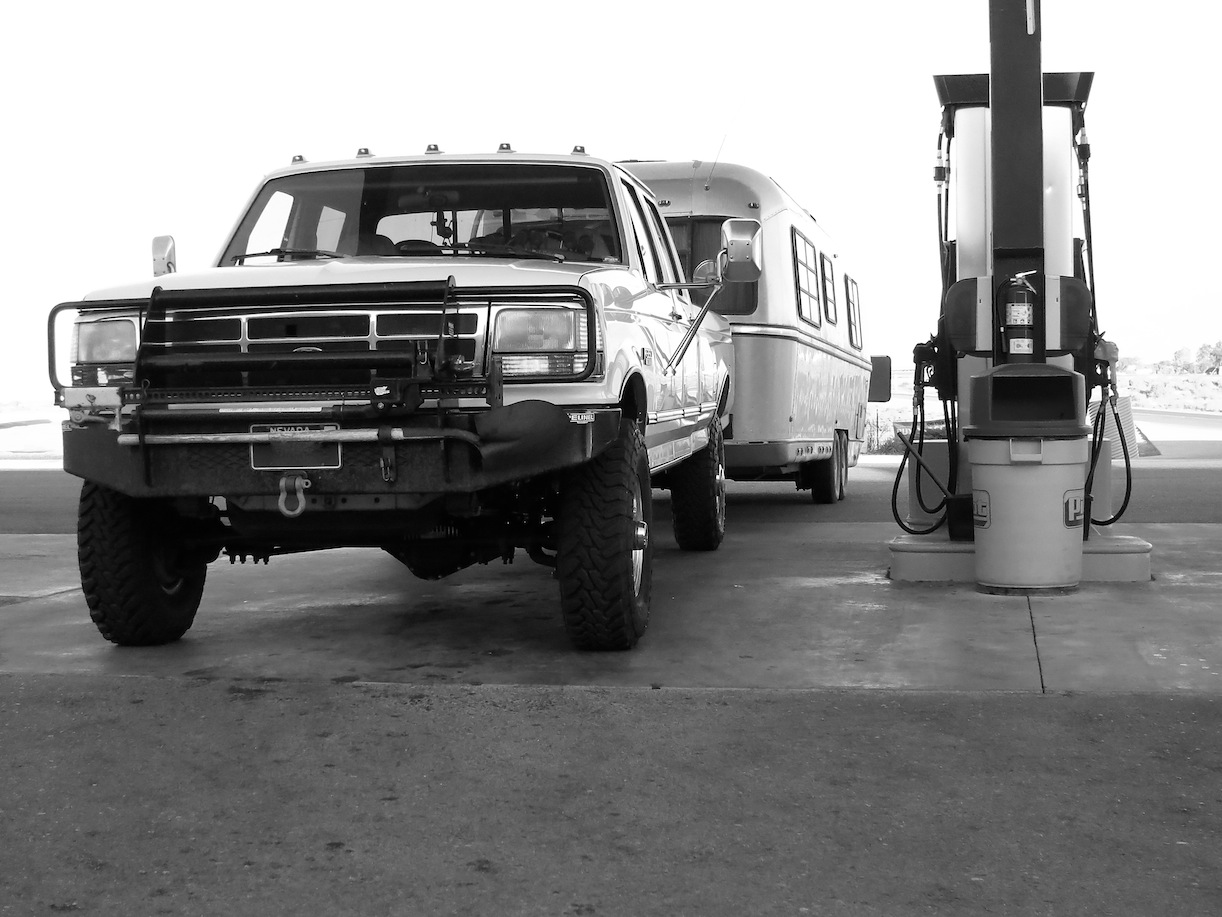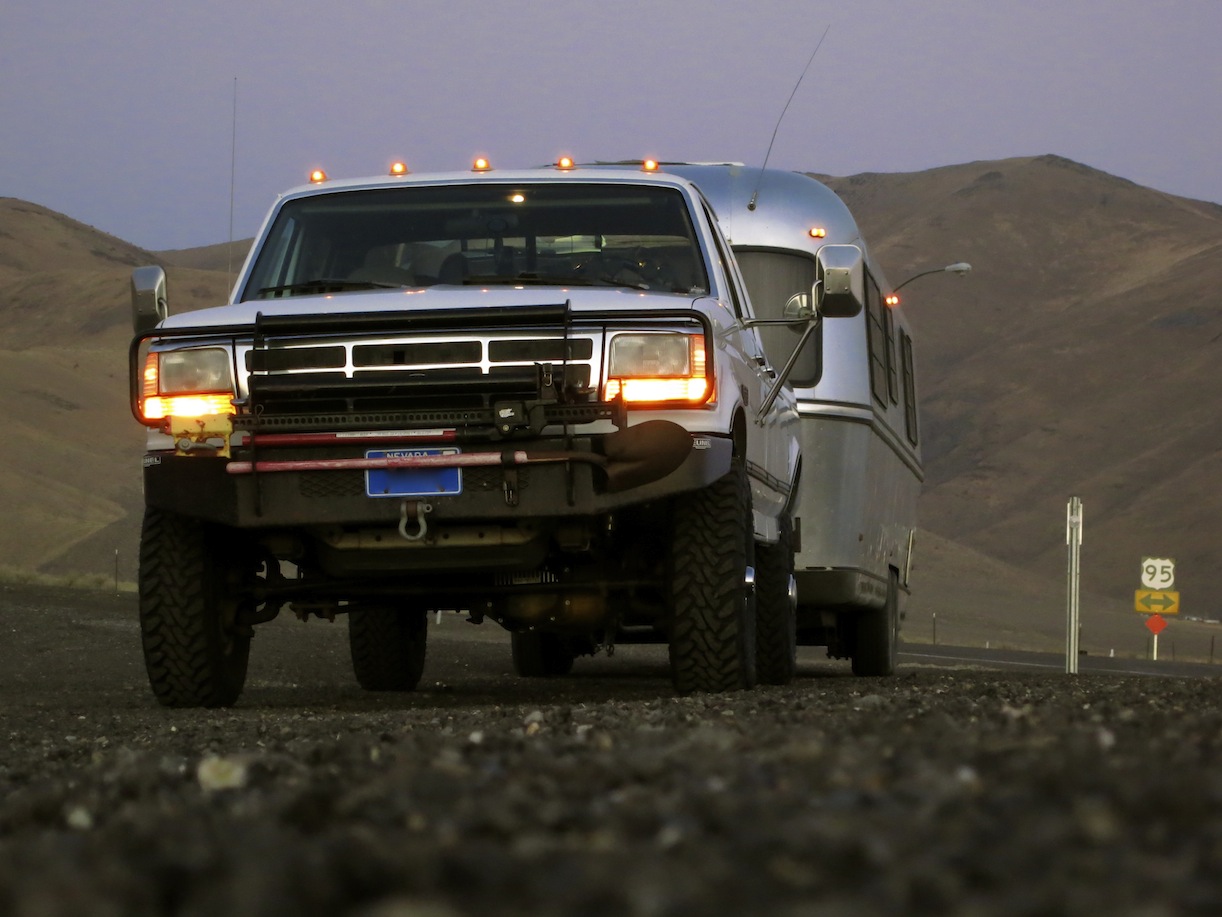Mastercraft Courser CXT
Commercial Traction
Most light-truck tires are welcome in my garage, from tame all-terrains to the impressively streetable modern mudder. However, I have a strong preference for rubber that fit neither category, those that intentionally blur the lines of distinction, finding their own focus. Known by their traditional name, commercial traction tires, or aggressive all-terrains, hybrid, or the newer slang moniker, tweener (in-between), the design goal is similar.
Commercial traction tires are not new, they have been produced for decades, though the choices were fewer and they rarely received much marketing budget. Still not necessarily the beneficiary of the biggest advertising campaigns, depending on the brand, the performance advantages of modern hybrid treads have won-over many enthusiasts as a practical choice with fewer compromises. This segment of the market demands good grip on multiple surfaces, load-carrying capability, and puncture resistance.
Notably better in sloppy stuff than a typical all-terrain, with less noise and superior versatility than muds, there is much to like. Some have more sipes and the 3-peak/snowflake winter rating, while many don’t, but still perform well in the wet stuff. Nearly all have prodigious tread depth and void—particularly at the outer lugs—that broadcast their ability to absorb and fling muck when required. Mud-terrains are often described as 20/80-designs (20% road 80% dirt/mud), but commercial tractions are generally 60/40, 50/50, or 40/60, depending on their characteristics.
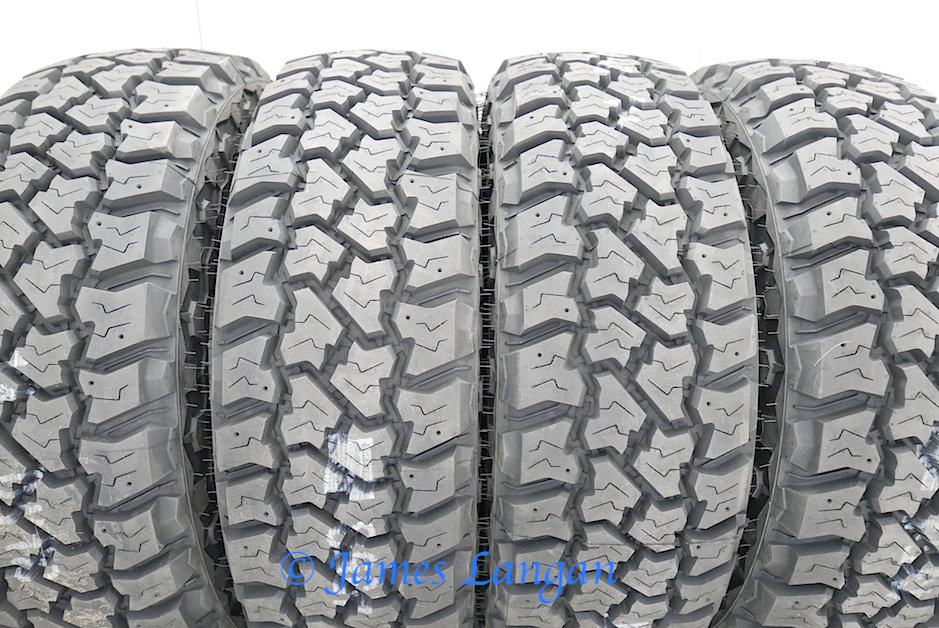
Mastercraft Courser CXT
In May 2016, Mastercraft Tires introduced their new light-truck (LT) commercial traction tire, the Courser CXT. It’s a mid-void, 4-rib that replaces the Courser C/T (C/T = commercial traction). Mastercraft is a subsidiary of the Cooper Tire & Rubber Company, one of the few remaining American tire companies and manufacturers. Before sharing my observations and insights, what Mastercraft says about their product is quoted below in orange:
Overview
The Courser CXT was designed as a premium light truck commercial traction tire that provides trusted all-terrain performance with enhanced off-road durability. The CXT features variable full depth siping and a silica rich tread compound for enhanced wet and winter traction. The large tread element and blocky design help to resist abnormal wear while enhancing tread stability and durability.
Large Surface Area Tread Blocks
Provide increased grip on and off-road while improving wear performance.
Optimized Void-to-Rubber Ratio
The amount of rubber on the road is optimized to provide rough terrain traction and enhance on highway driving comfort and feel.
Enhanced Upper Sidewall Design
The shoulder design increases off-road traction with side traction blocks and the circumferential raised rubber feature protects against sidewall abrasion and impacts.
Large Shoulder Scallops
The scallops provide a “mud-scoop” effect for dependable off-road traction while giving the CXT a more aggressive look, to enhance the appearance of almost any light truck vehicle.
M+S Rated
Extra Tidbits
The CXT is offered in 29 sizes, starting with the oldie-but-goodie 31×10.50R15LT, up to the 35×12.50R20LT. The size breakdown includes three 15-inch (all load-range-C), nine 16-inch, nine 17-inch, five 18-inch, and three 20-inch sizes. All sport a substantial 18.5/32-inches of tread depth, offering potentially more grip and longevity than others that start with less. In addition to the M+S rating, the CXT can be studded.
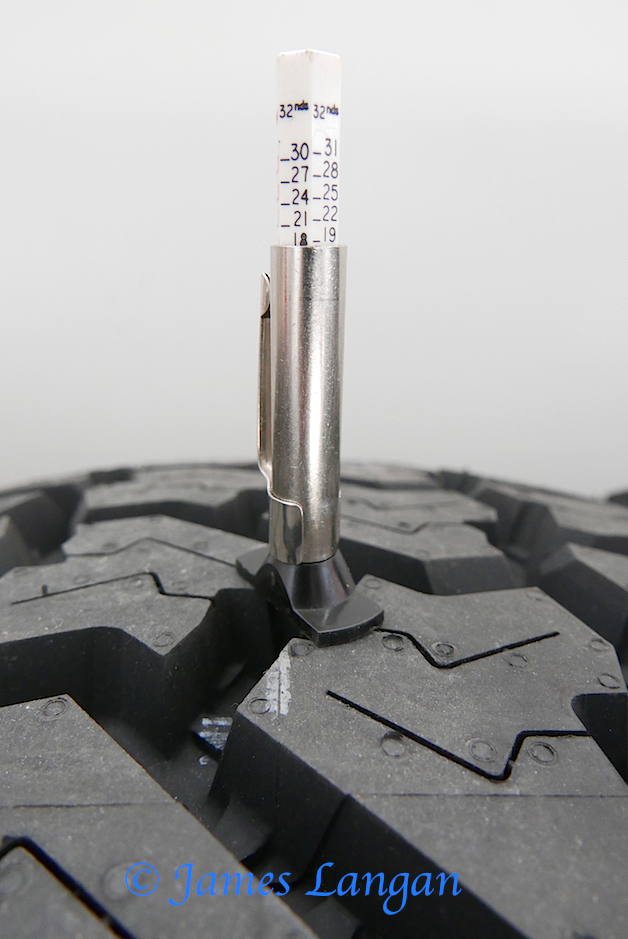
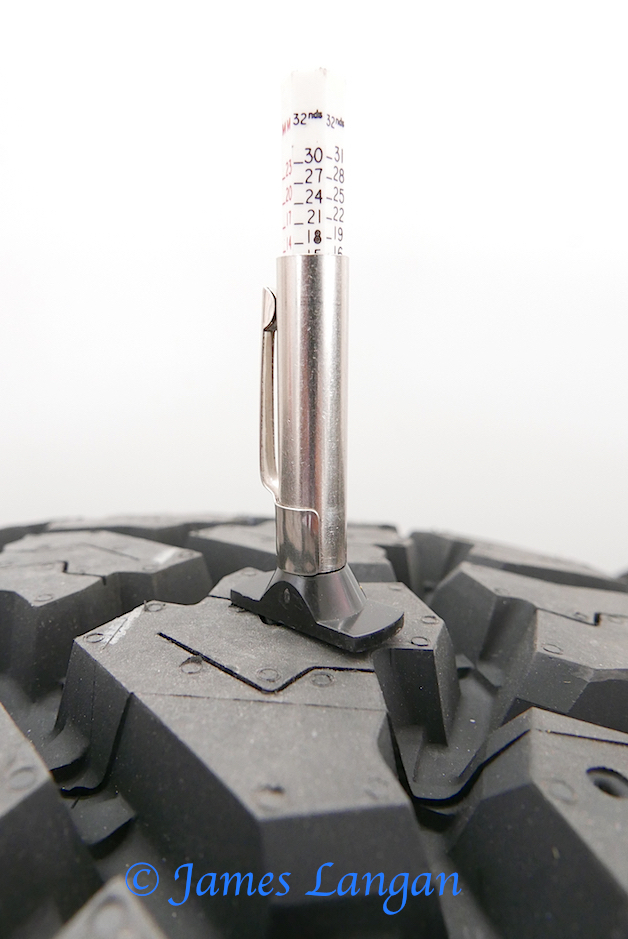
For those familiar with Cooper’s other LT designs, it is easy to assume that the CXT is simply a different tread slapped onto their extremely popular and capable, Discoverer S/T MAXX casing. Not so, they are different tires, both tread and carcass. Yet, many considering the CXT will likely also consider the S/T MAXX.
Mastercraft CXT vs. Cooper S/T MAXX—Two Primary Differences
The Discoverer S/T MAXX employs Cooper’s Armor-Tek3 carcass, a 3-ply sidewall, whereas the Courser CXT uses a 2-ply design. There are pluses and minus to both depending on one’s needs; 3-ply sidewalls are generally more rugged and stiffer, where a 2-ply may flex better, ride softer, and weigh slightly less.
The S/T MAXX is optimized for severe cut and chip resistance. When the MAXX was added to Cooper’s light-truck line it’s closest sibling was the S/T (no MAXX), which was/is not nearly as cut and chip resistant. The Discoverer S/T is also a straight 4-rib, where the MAXX’s center alternates between four and five.
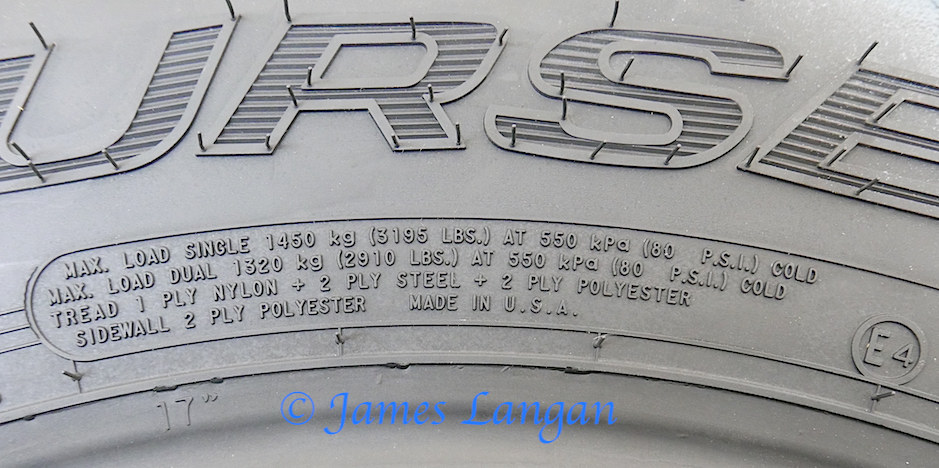
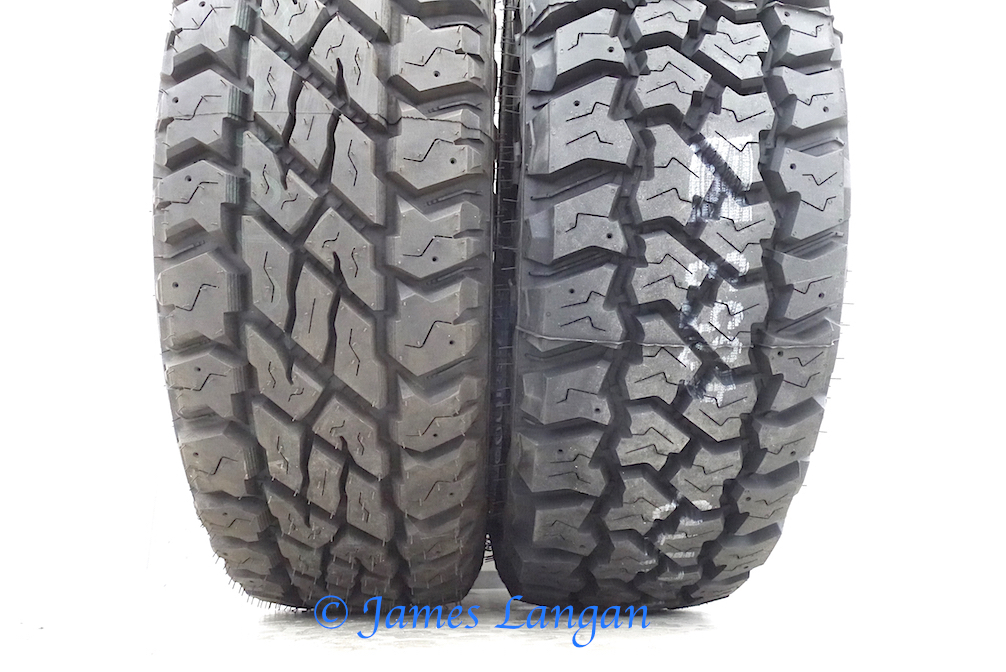
The CXT has extra silica for additional wet traction. The slightly higher-void of the 4-rib CXT is visually similar to the older Cooper S/T, but the CXT has deeper scalloped outer lugs, plus beefy upper-sidewall (shoulder) tread that the older S/T does not.
More or slightly less void, 2-ply or 3-ply sidewalls, increased wet traction potential or optimized cut and chip resistance…only you can decide.
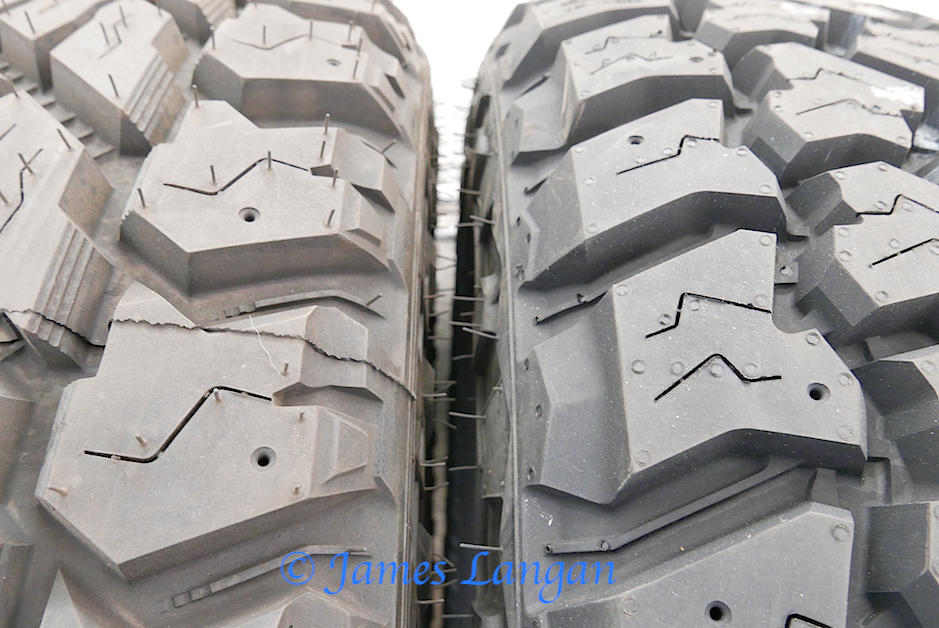
Cult Of The 255 / The Third 255/80R17
Several of the 29 Mastercraft Courser CXT sizes could fit one of my vehicles, and I was tempted to pick a larger size. However, for nearly two decades I’ve run and been a fan of moderate width tires, chiefly the 255/85R16, and for a few years its 17-inch brother, the 255/80R17. Mastercraft makes the CXT in both of these sizes, and 255/8x aficionados are surely rejoicing!
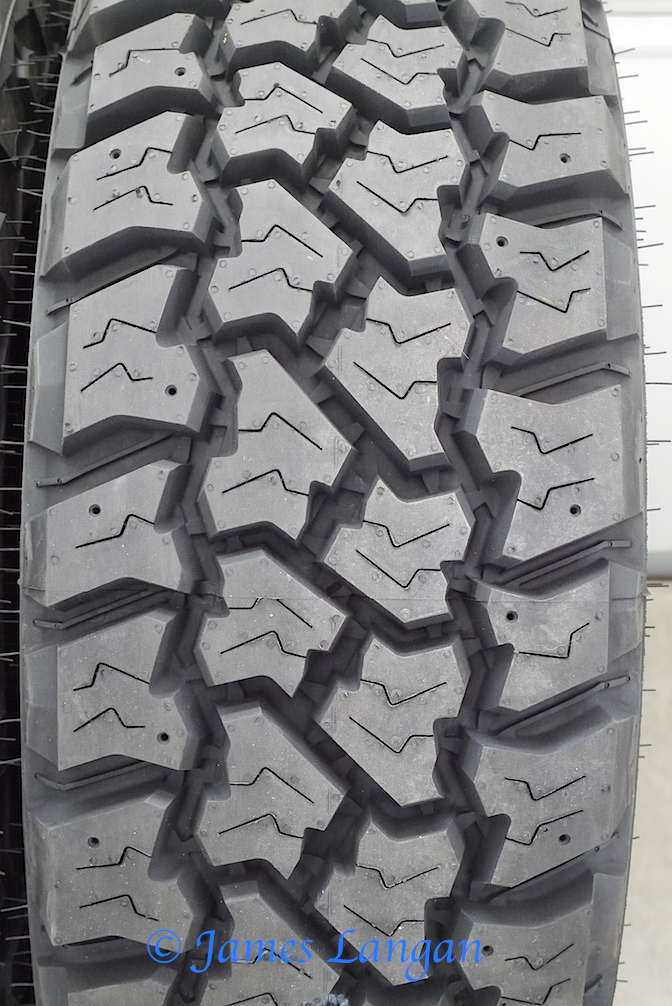
One challenge for those wanting to move to the 255/85 size is the lack of treads with less void; many current 255/85R16 offerings are mud-terrains. The 255/85 has become a niche choice, with few newer trucks using 16-inch wheels. The 255/80R17 is even more specialized. Mastercraft’s introduction of the CXT raises the total number of tires offered in this size to three. Cooper makes two of them; BF Goodrich’s mudder is their only competition.
Height, Weight, Width
A super-clean set of fourth-generation Ram 17×8-inch WFK forged-aluminum wheels were purchased from a Craigslist seller, each weighing just 21.8 pounds with the hubcap. Unmounted, a 255/80R17 CXT registers 55.2 pounds on my shop scale (the same size S/T MAXX is 58 lb.), and once mated to a WFK wheel the combination measured 77.2 pounds. Inflated to the maximum 80 psi, the overall height was 32 15/16-inches, with 8-inches of tread.
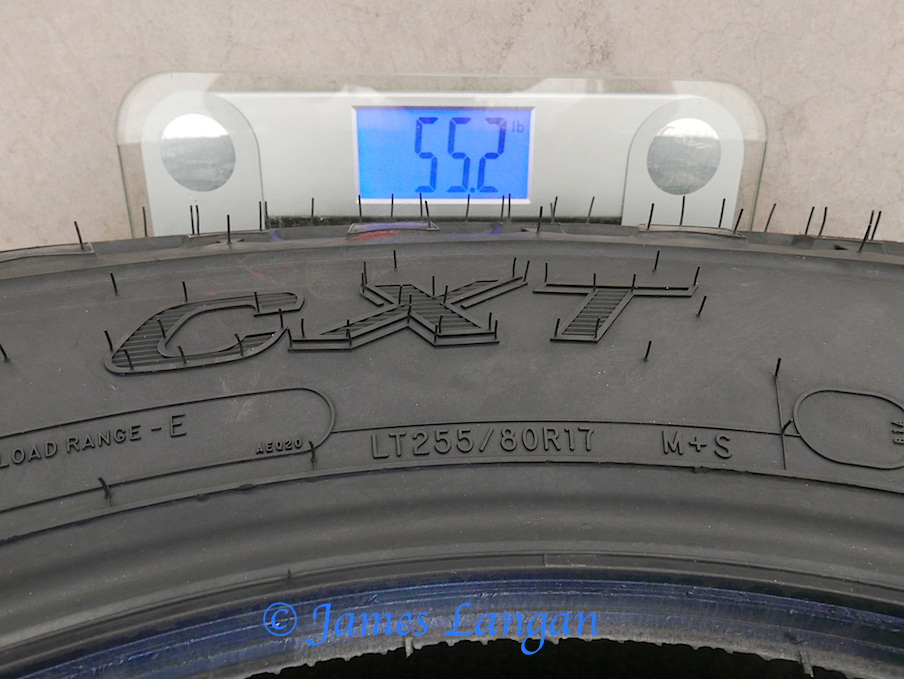
It’s noteworthy that I’ve repeatedly found published specifications for Cooper-manufactured tires to be accurate. For this tire and size, on a 7-inch wheel, Mastercraft lists overall diameter of 33.15-inches, and tread width of 8.07-inches. Acknowledging that manufacturers’ measuring tools are likely more accurate than my straightedge and yardstick method, and the 255/80 CXT was mounted on a wider wheel, my measurements were still within nearly two-tenths. For the curious, the unmounted height was almost a half-inch shorter, but focusing on unmounted diameter is pointless: tires are not used without wheels and compressed air.
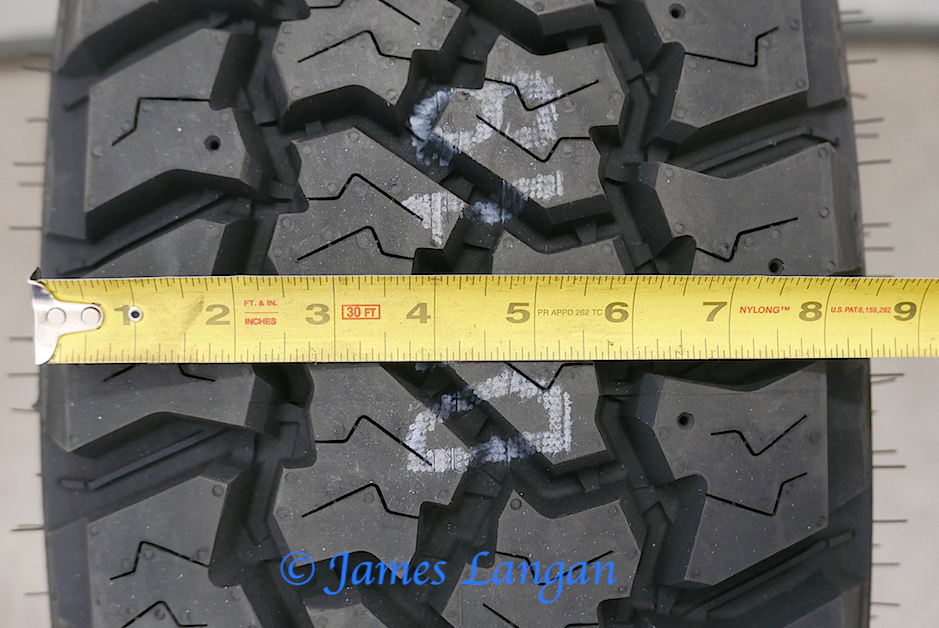
Mounting And Balancing
Manufacturing tolerances, weight, width, construction, and the wheel employed all affect how easily and well an assembly is balanced. In general, smaller and lighter equals easier to true. Using the static, single-plane method, the ounces of wheel weight required were:
#1 3.50
#2 2.75
#3 2.50
#4 4.50
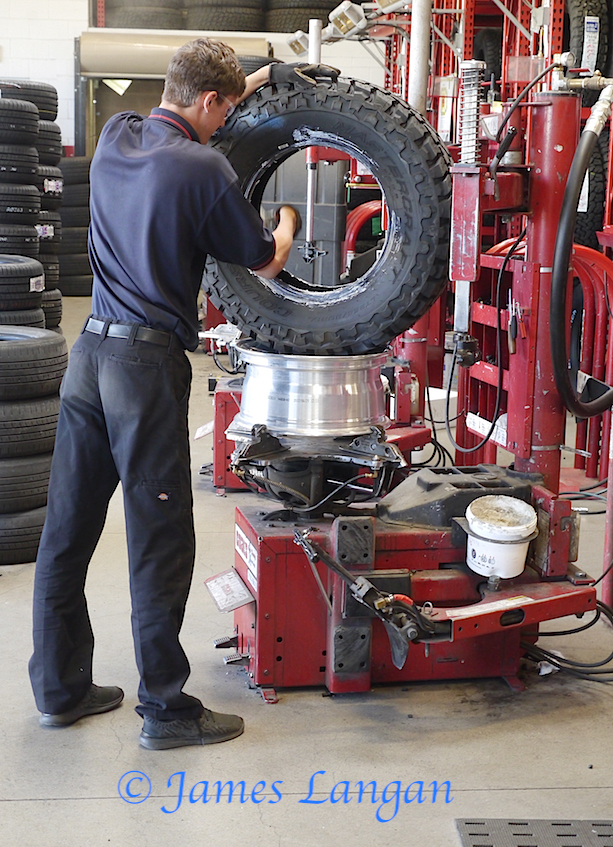
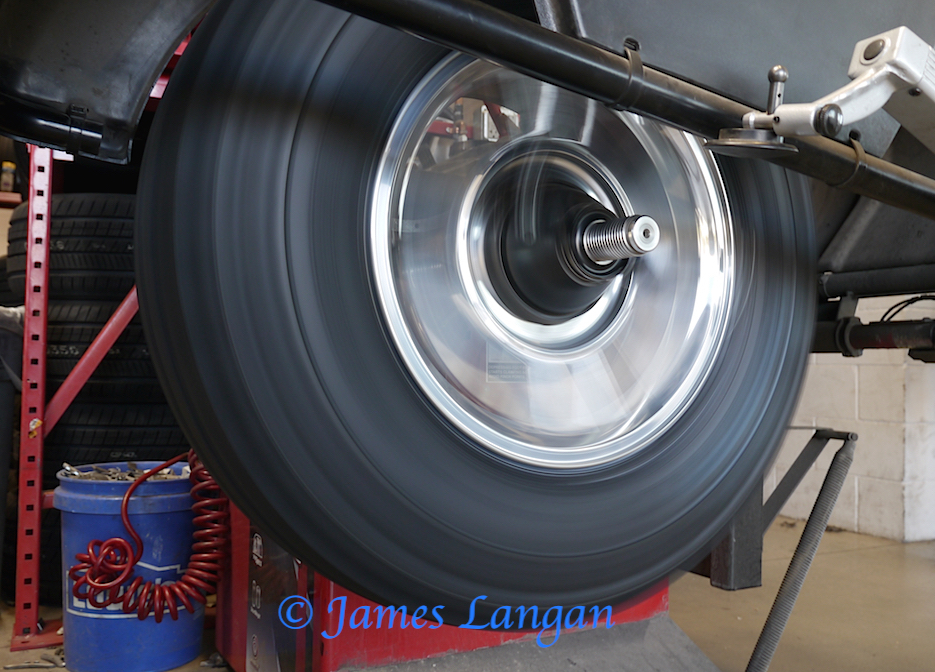
First Drive
The tires were immediately put to work supporting a maximum load on a built Ram that typically lives at its 10,000-pound Gross Vehicle Weight Rating (GVWR), carrying a Hallmark Milner camper, tools, and other supplies. With the fronts at 60 psi and the rears at 80 psi, the ride was neither mushy nor harsh. Over a familiar section of freeway where expansion joints can induce freeway hop (generally not a problem on this truck) the CXTs exhibited no such tendency. Steering response was excellent, a common trait with narrower tires, as they take less energy, time, and effort to change direction. Even at paralegal speeds, balance didn’t change and no bad-vibrations were felt.
Noise
Initial impressions were that noise is slightly more than the popular Cooper S/T MAXX, which is an impressively quiet design. This is not surprising as the CXT has a higher-void, 4-rib pattern instead of the MAXX 4/5-rib. The volume and deeper tone is not annoying or loud, and what I expected; both are certainly much quieter than any mud-terrain. The CXT sounds similar but slightly quieter than the older Cooper Discoverer S/T (not to be confused with the S/T MAXX, STT or STT PRO).
Appearance
Function is more important than form, but many like their 4WDs to look tough. Before receiving this set of Mastercrafts I’d not seen the tire in person, just the few marketing shots online. There were no substantive professional reviews or user reports. This article still may be the first. The outer lug scallops were a pleasant surprise, and the sidewall shoulder tread was beefier than I expected. Pretty sexy, in a nice, girl-next-door way.
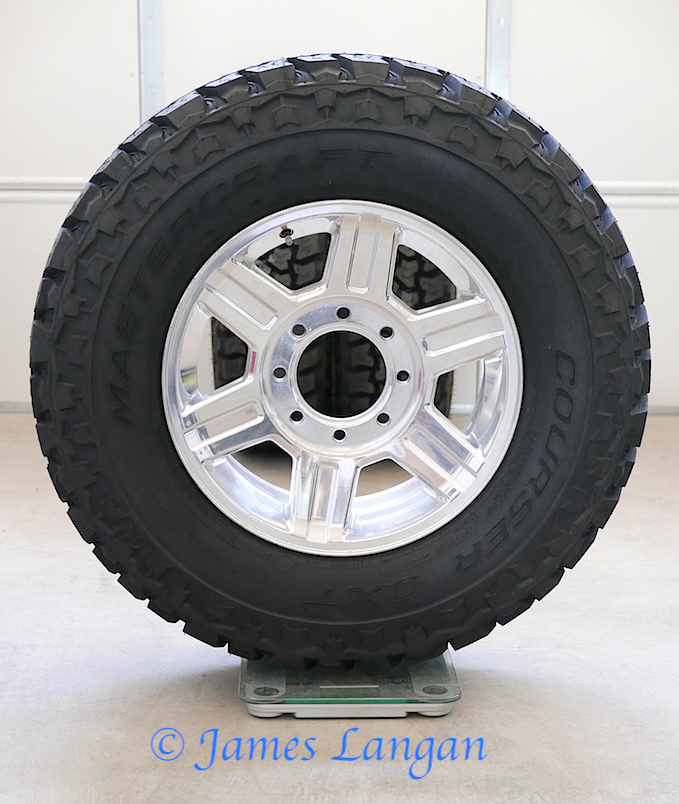
Notes On Tracking
When changing to a different tread, size, and/or wheel, there is a possibility that your vehicle may need a custom alignment to match the new combination to the chassis. Some folks are willing to ignore a little drift (or pull) right or left, where others find any drift unacceptable. Some tires have a well-deserved reputation for directing vehicles to the shoulder or median, but different trucks and roads can cause different behaviors.
If your truck has an independent-front-suspension (IFS), adjusting the caster (and to a lesser extent camber) to help it track straight should be easy for a good alignment shop willing to make custom adjustments. Be willing to pay more. Finding such an establishment with a skilled technician may be challenging. Many places that should know better still want to use the factory geometry for modified rigs when different settings would fix or dramatically improve drivability.
Picking My Own Line
The 2014 Ram initial CXT test platform has a Specialty Products Company (SPC) 1.5-degree offset ball joint at the right-front, installed after only 1,500 miles to counteract the characteristic right-pull of many Ram trucks and/or some tires. Before any modifications, still running the stock Firestone highway treads, this truck drifted right and would head for the shoulder quite rapidly if the steering wheel was released, typically in six seconds or less. Unacceptable.
The SPC offset ball joint increased caster angle on the right, effectively directing the truck left helping the chassis drive straight without input from the driver to correct the right drift. With such an aggressive geometry modification there is always the possibility, even likelihood, that the truck will track left with some tires or under certain circumstances, including differing road crown. This was a compromise I was willing to live with, but it’s not for everyone. Swapping ball joints is not a trivial affair on a live-axle truck.
With the CXTs mounted, this truck has a slight tendency to go left, depending on the roadway. However, three “look mom, no-hands” tests during the first 100 miles, under suboptimal windy freeway conditions, achieved 12.06, 11.90, and 12.26 seconds before semi-autonomous driving had to be curtailed to prevent the truck from changing lanes. These are good numbers, but not surprising as narrower treads generally track (much) better than wide ones. This also means I’d be perfectly happy to run these on long road trips. The stars were aligned during another test on Interstate 5 in California where I clocked 25 seconds of straight tracking. A buddy’s Dodge that drifts right with most tires, still did with the CXTs mounted . Your truck may vary; adjust as needed.
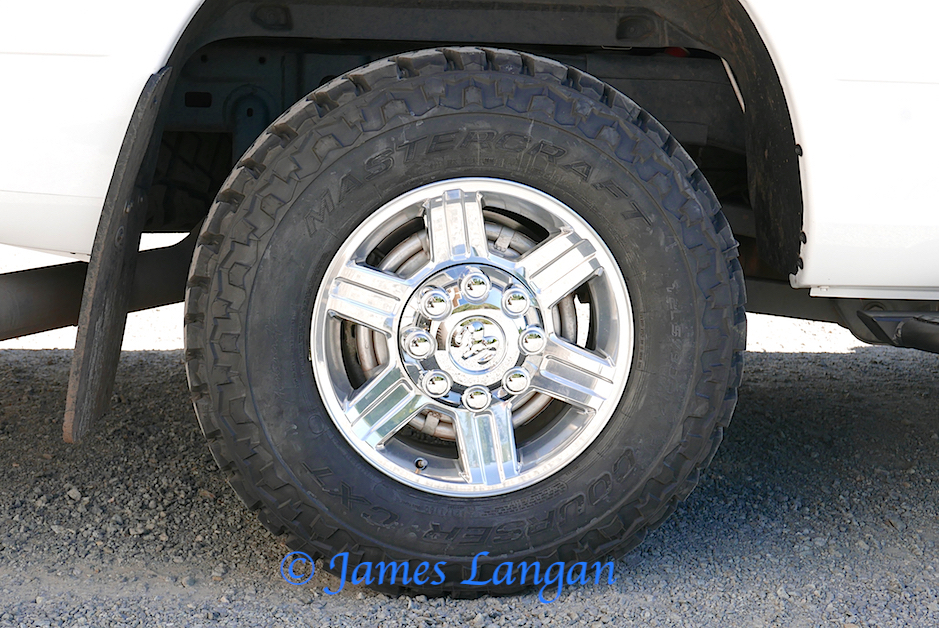
Sources:
Cooper Tire & Rubber: coopertire.com
Mastercraft Tires: mastercrafttires.com
Specialty Products Company: spcalignment.com
Copyright James Langan/RoadTraveler. All Rights Reserved.
